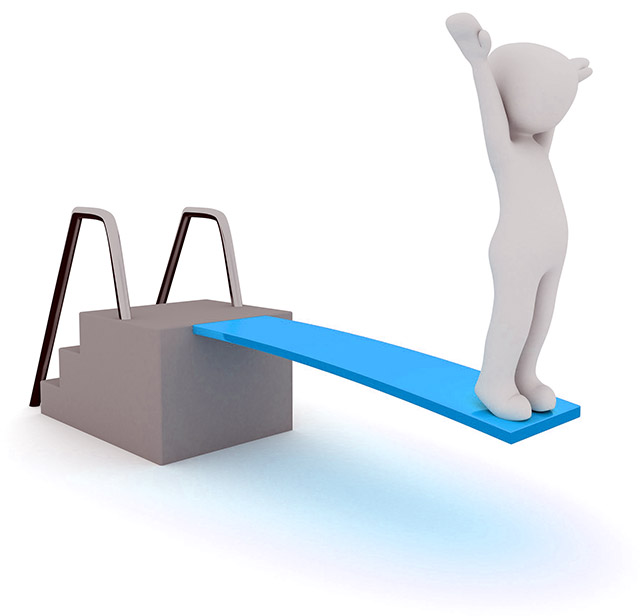Below are suggested fitness tests relevant to the sport of diving. Fitness is a vitally important component of success in diving, and it is important to assess and monitor fitness as part of any training program. There are many components of fitness that make up a good diver. Testing should assess the abilities of the diver in the main fitness components relevant to diving, such as strength, power, balance, coordination and flexibility (see our discussion on the fitness components for divers).
The Dutch Diving Fitness Test
The Dutch diving fitness test (DDFT), designed for young divers, was introduced in the Netherlands in 2000. It is a modification of a Mexican diving fitness test. There are 10 test items, covering the wide range of fitness components relevant for diving. Noticeable test components missing are tests of coordination and balance. I would also suggest testing body fat using skinfold measures in addition to body weight, as this would be a better indication of excess fat levels.
 springboard diver
springboard diverThe 10 Test Items of the DDFT
These tests should be done in the listed order.
- Body height — Standing height measured in bare feet. Stature is considered important for diving mechanics.
- Body weight — Bodyweight measured in kg. A low bodyweight relative to height is advantageous for diving.
- Toe point — The diver sits on a mat with the legs straight ahead with the ankles plantar flexed (toes pointing). Measures the distance from the bottom of the big toes to the floor. This is an important attribute for divers as being able to point the toes well can score extra points from the judges.
- Push ups — The maximum number of modified push-ups from the knees in 20 seconds. Measures upper body strength.
- (Semi) Pike ups — The diver lies on the floor facing upwards, with the arms extended past the head and the hands slightly above the floor. The legs are held at a 90 degree angle straight up. The diver then reaches up to touch the toes and then back to the floor, and attempts as many repetitions as they can in 20 seconds. This test is a measure of the hip flexor muscle strength.
- Back extensions — The diver lays on a table face down, with the upper body hanging over the edge towards the floor. The hands are clasped behind the neck. A second diver supports the legs, while the diver extends to a horizontal position. The diver attempts as many repetitions as possible in 20 seconds. This test measures lower back muscle strength.
- Stand and reach — A measure of flexibility, the diver stands on a raised surface (step or table) and bends forward, with straight legs. Measure how far past the toes the finger can reach.
- Shoulder flexibility — This test is an assessment of the water entry position. The diver lies flat on a mat, facing down. The diver holds their arms above the head and holds a pen by both hands. The diver then raises their arms as high as they can while the forehead remains touching the mat. Measure from the floor to the pen.
- Standing long jump — Measure the distance from the front of the toes to the back of the nearest heel at landing. The best score from three attempts. This is a measure of explosive leg power.
- 4 x 10 meter sprint — A measure of speed and agility. The diver runs 10m to touch a cone then back to the start line, repeating this twice without a break (total of 40m). Two attempts are allowed.
Reference
- Zimmermann W.O. The Dutch Diving fitness test; defining the normal ranges of a test battery. Sport & Geneeskunde 2009; 2: 36-46.
Related Pages
- Fitness Components for Diving
- Anthropometry for Diving
- Diving Polls
- Other sport-specific fitness tests
- Complete List of fitness tests
- About the sport of diving


 Current Events
Current Events